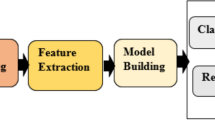Abstract
Nowadays, an increasing number of people are facing the consequences of late detection of neurodegenerative diseases. There is an evident rise in the incidence of these diseases due to the ageing of the population. Alzheimer’s disease is one of the most common neurodegenerative diseases, making it essential to develop a practical diagnostic method. In this article, an original method for detecting Alzheimer’s disease using deep learning techniques was proposed based on the analysis of data originating from multiple modalities: magnetic resonance imaging (MRI) scans, blood test results, and psychological tests. The method was implemented, examined, and compared to existing solutions-the development of the method utilized available patient data from the ADNI dataset. The research results confirmed that the proposed method for Alzheimer’s disease detection could be a promising diagnostic tool. It exhibited high accuracy in identifying cases of Alzheimer’s disease and was able to distinguish these cases from both healthy individuals and those with mild cognitive impairment (MCI).
Access this chapter
Tax calculation will be finalised at checkout
Purchases are for personal use only
Similar content being viewed by others
References
Alzheimer’s Disease Neuroimaging Initiative. Alzheimer’s disease neuroimaging initiative project website (2024). https://adni.loni.usc.edu/
Bogdanovic, B., Eftimov, T., Simjanoska, M.: In-depth insights into Alzheimer’s disease by using explainable machine learning approach. Sci. Rep. 12(1), 6508 (2022)
Cummings, J.L., Cole, G.: Alzheimer disease. Jama 287(18), 2335–2338 (2002)
Farooq, A., Anwar, S., Awais, M., Rehman, S.: A deep CNN based multi-class classification of Alzheimer’s disease using MRI. In: IEEE International Conference on Imaging systems and techniques (IST), pp. 1–6 (2017)
Feng, W., et al.: Automated MRI-based deep learning model for detection of alzheimer’s disease process. Int. J. Neural Syst. 30(06), 2050032 (2020)
Gupta, Y., Lama, R.K., Kwon, G.-R., Initiative, A.D.N.: Prediction and classification of Alzheimer’s disease based on combined features from apolipoprotein-e genotype, cerebrospinal fluid, mr, and fdg-pet imaging biomarkers. Front. Comput. Neurosci. 13, 72 (2019)
Jack, C.R., Jr., et al.: A/t/n: an unbiased descriptive classification scheme for Alzheimer disease biomarkers. Neurology 87(5), 539–547 (2016)
Khedher, L., A. Illán, I., Górriz, J.M., Ramírez, J., Brahim, A., Meyer-Baese, A.: Independent component analysis-support vector machine-based computer-aided diagnosis system for alzheimer’s with visual support. Int. J. Neural Syst. 27(03), 1650050 (2017)
Kruthika, K.R., Maheshappa, H.D., ADNI.: Multistage classifier-based approach for Alzheimer’s disease prediction and retrieval. Inform. Med. Unlocked, 14, 34–42 (2019)
Lahat, D., Adali, T., Jutten, C.: Multimodal data fusion: an overview of methods, challenges, and prospects. Proc. IEEE 103(9), 1449–1477 (2015)
Lee, G., Nho, K., Kang, B., Sohn, K.A., Kim, D.: Predicting Alzheimer’s disease progression using multi-modal deep learning approach. Sci. Rep. 9(1), 1952 (2019)
Lin, W., et al.: Convolutional neural networks-based MRI image analysis for the Alzheimer’s disease prediction from mild cognitive impairment. Front. Neurosci. 12, 777 (2018)
Liu, Z., Lu, H., Pan, X., Xu, M., Lan, R., Luo, X.: Diagnosis of Alzheimer’s disease via an attention-based multi-scale convolutional neural network. Knowl.-Based Syst. 238, 107942 (2022)
Mirzaei, G., Adeli, H.: Machine learning techniques for diagnosis of Alzheimer disease, mild cognitive disorder, and other types of dementia. Biomed. Signal Process. Control 72, 103293 (2022)
Ortiz, A., Munilla, J., Gorriz, J.M., Ramirez, J.: Ensembles of deep learning architectures for the early diagnosis of the Alzheimer’s disease. Int. J. Neural Syst. 26(07), 1650025 (2016)
Spasov, S., Passamonti, L., Duggento, A., Lio, P., Toschi, N., ADNI. A.: parameter-efficient deep learning approach to predict conversion from mild cognitive impairment to Alzheimer’s disease. 189 276–287 (2019)
Author information
Authors and Affiliations
Corresponding author
Editor information
Editors and Affiliations
Rights and permissions
Copyright information
© 2024 The Author(s), under exclusive license to Springer Nature Switzerland AG
About this paper
Cite this paper
Kiciński, K., Pietranik, M., Kozierkiewicz, A. (2024). A New Method of Detecting Alzheimer’s Disease. In: Nguyen, N.T., et al. Computational Collective Intelligence. ICCCI 2024. Lecture Notes in Computer Science(), vol 14811. Springer, Cham. https://doi.org/10.1007/978-3-031-70819-0_24
Download citation
DOI: https://doi.org/10.1007/978-3-031-70819-0_24
Published:
Publisher Name: Springer, Cham
Print ISBN: 978-3-031-70818-3
Online ISBN: 978-3-031-70819-0
eBook Packages: Computer ScienceComputer Science (R0)




